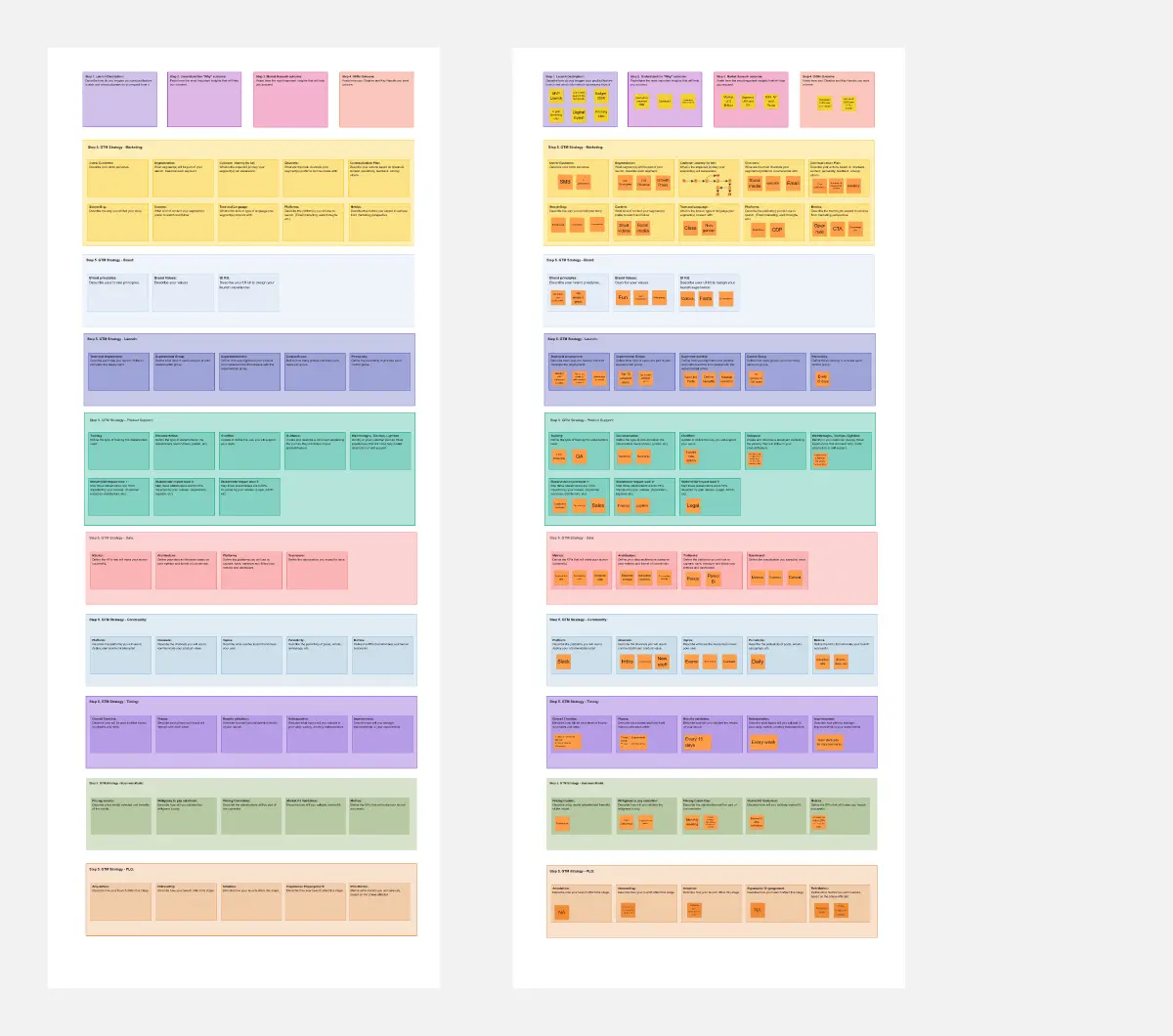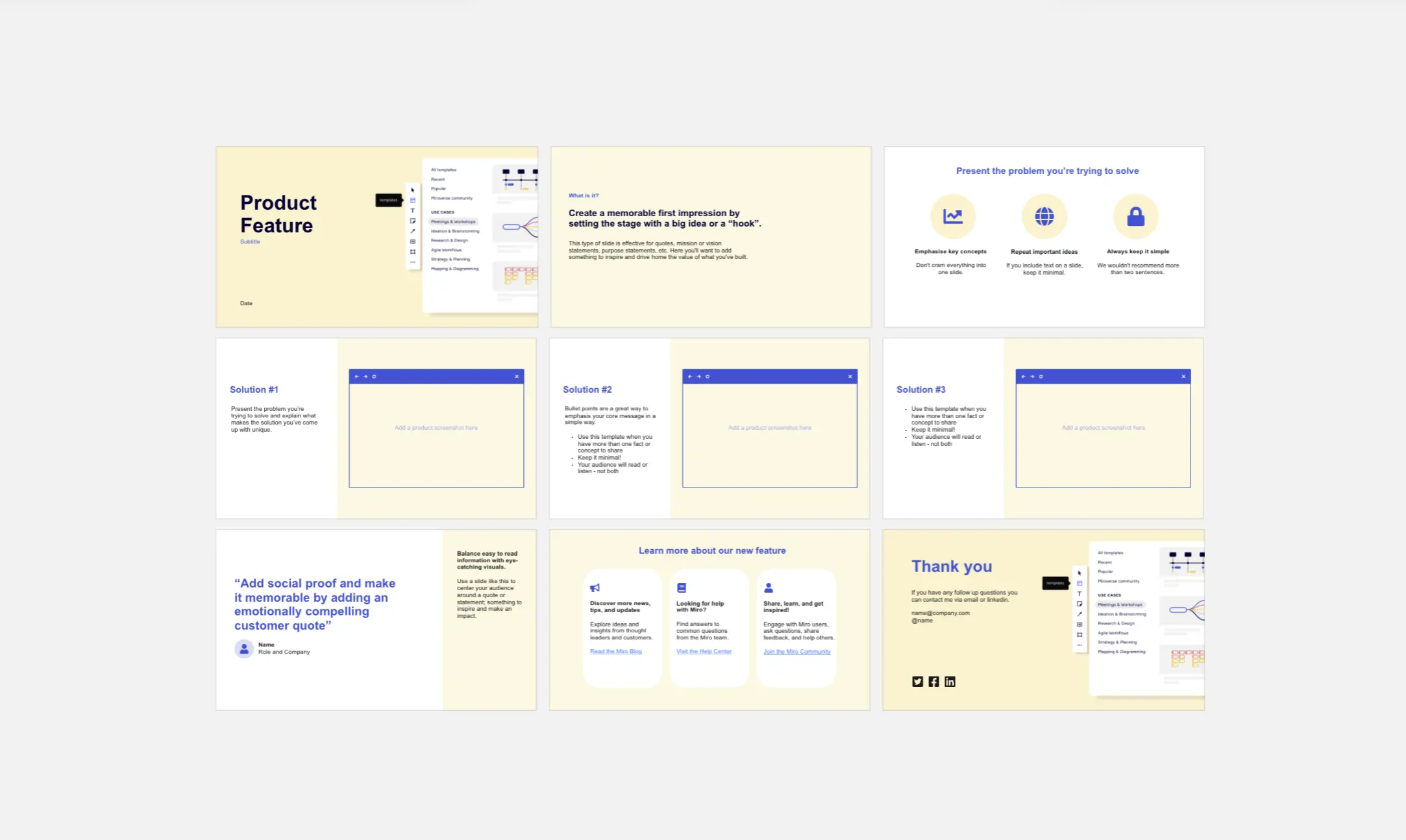What
The Now-Next-Later roadmap template in Miro is designed to revolutionize the way product teams prioritize and execute initiatives. Traditional roadmaps often get bogged down in strict timelines and feature lists. In contrast, this template emphasizes prioritizing initiatives into actionable buckets of 'Now,' 'Next,' and 'Later,' plus 'Candidates' for pending items and 'Completed' for finished tasks. This allows for a more dynamic, flexible approach to product planning and strategy.
Why
This template was created to facilitate a more adaptable and responsive form of roadmapping, particularly useful in today's fast-paced, ever-changing business environment. It aims to keep teams focused on problem-solving and strategic alignment rather than getting lost in an endless sea of tactical tasks.
Who
This template is beneficial for product managers, project managers, and teams of all sizes—be it startups, SMEs, or large corporations. It serves as a central hub where cross-functional teams can align on objectives, initiatives, and priorities.
When
The template is most useful when you are:
Kicking off a new project and need a clear, shared vision
Realigning your team after a pivot or significant change
Looking for a tool to facilitate periodic strategy sessions
Updating stakeholders on the product or project status
Needing to prioritize a backlog of ideas and issues into actionable plans
How
Start by Filling the 'Now' Column: Populate this section with initiatives that need immediate attention. These should be high-priority items that are critical to current objectives.
Move to 'Next' and 'Later': Use these columns for medium-term and long-term initiatives. Try phrasing them as hypotheses or questions to encourage a focus on problem-solving rather than jumping to solutions.
Candidates and Completed: Use 'Candidates' for potential future initiatives that aren't yet ready for prioritization. Move completed initiatives to the 'Completed' column as they are finalized.
Link Objectives: For each initiative, link one or more organizational objectives. This makes it clear why each initiative exists and what it aims to achieve.
Break Down Initiatives: In the 'Now' column, you can break initiatives into more specific experiments or ideas. You might want to add status indicators to show work in progress or completion.
Outcomes: Capture both target and actual outcomes for every initiative. This will help in evaluating whether the initiative was successful and should influence future roadmap decisions.
Be Strategic: Frame initiatives in a way that they appear as problem-solving opportunities, not as a to-do list. For example, instead of 'Write transactional emails,' say 'Optimize User Onboarding Communication.'
Flexibility and Dates: This roadmap is a living document. Add dates only to initiatives that are time-sensitive or have strategic deadlines. Update at least monthly to ensure it remains current.
Stakeholder Collaboration: This isn't a one-person show. Invite team members and stakeholders to provide input and move initiatives as needed, ensuring that your roadmap is a collective, validated strategy.
By following these guidelines, you'll find this template to be an effective, dynamic tool for aligning your team and driving your product or project towards success.






